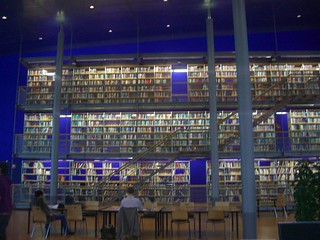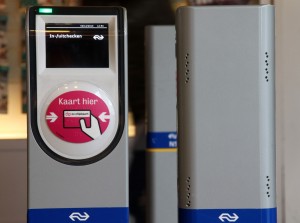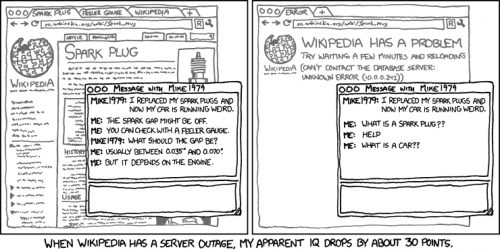Kris Shrishak
Technological implants- Therapy or Enhancement?
Technological implants in human beings is not a new phenomenon. The pacemaker is used by many people around the world to help their heart function appropriately. For the past few years, cochlear implants have been performed on people whose hair cells in the inner ear become unresponsive. In this case the implant acts as a replacement for the lost functionality of hair cells. In both these examples, technology is used as a therapy in order to assist in normal functioning of the human being. In the case of cochlear implants, it has been observed that the person with the implant takes few weeks or months to get used to it. It is claimed that though the person is able to hear sounds again, the sounds that they hear is different from what they had experienced before going deaf. In the case of a child which is born deaf, the sounds heard due to the cochlear implant will be the only sounds known. Technology here is a mediator in helping humans achieve their goal of being able to hear sounds. There is no original perception mediated by technology but the mediated perception itself is the original (Ihde, 1990). But what if cochlear implants allowed humans to hear ultrasonic sounds. Humans without cochlear implants cannot hear ultrasonic sounds. In this case, would cochlear implants be a form of therapy or enhancement?
One of the first commercial application of RFID implants was in the field of medicine in order to monitor the patient. This would be considered as a therapy by the hospital. But if we consider the umpteen number of people who do not have access to such technology but have the same diseases, it does seem that patients with implant are privileged and that the implant is an enhancement to their functioning as human beings. Some might say that the privileged ones are ‘better than normal’ (Kurzweil, 2005). They can upload their information or data into the database of the hospital through the internet unconsciously. They don’t need to click a button to send the information. In certain regards, they are uploading a part of themselves which could be looked upon as extending their memory (Clark & Chalmers, 1998). They may not consciously know or remember their current blood sugar level but the medical database of their hospital is updated with the information that can be accessed later if needed.
One possible application of RFID chips would be to implant them on finger tips of a person. Let us consider that a policeman is implanted with an RFID chip containing an infrared sensor, which senses heat, on the index finger of his right hand. If he is entering a house which is dark to catch a crime suspect, he can find in which direction the suspect is by just spatially moving his hand. This gives him additional power compared to his colleagues and is certainly an enhancement to his ‘human qualities’. But Professor Mark Gasson from Reading University has a different view. He does not consider the implants as an enhancement (Gasson, Human implants from invasive to pervasive at TEDxGoodenoughCollege, 2012). Though very few people have RFID implants now, he thinks that soon almost everyone will have it. He compares RFID implants to mobile phones. Earlier very few used mobile phones but in a few years almost everyone in developed and developing nations considers it as a necessity and feels out of place if they do not have a mobile phone. It is possible that in the near future, implants may not remain optional but may become compulsory.
References:
Clark, A., & Chalmers, D. J. (1998). The Extended Mind. The Philosopher’s Annual, XXI, 10-23.
Gasson, M. (2012). Human implants from invasive to pervasive at TEDxGoodenoughCollege. Retrieved from TedX: http://tedxtalks.ted.com/video/Human-implants-from-invasive-to
Ihde, D. (1990). Technology and the lifeworld. Indiana University Press.
Kurzweil, R. (2005). The singularity is near: When humans transcend biology. Viking/Penguin Group
The technology used when you borrow books from the library
In my last blog post I briefly described RFID technology. In this blog post I will give one implementation example as seen in the TU Delft library.
The books in the library have a paper thin passive RFID tag attached to the backcover. This tag contains information related to the book, mostly in the form of a unique identification number. When you want to borrow a book, you can use one of the self checkin/checkout stations. You need to place the campus card (if student or employee of TU Delft) or library membership card on the card reader to identify yourself. On placing one or several books on the self checkin station, the RFID tag is read by the reader. Placing multiple books on top of each other should be avoided as the reader may not be able to identify individual books due to tag collision. The reader communicates with a server to inform that one or several books have been checked-in by the identified visitor and this information is stored in the database. When you return (checkout) the books to the library, a similar sequence of events take place. If you require assistance, the librarian at the service desk can help you by using the checkin/checkout station available at the service desk. While leaving the library, you pass through exit sensors (another reader with a longer detection range than checkin/checkout stations) which verifies if the book has been checked-in. If the book has not been checked-in, an alarm is triggered.
Normally you will be exposed to RFID technology in the above mentioned form. Sometimes, the RFID tag attached to the book may not have the right information or a new book may have arrived. In such a scenario a conversion station behind the service desk is used by the librarian to write the required information on a new tag and attach it to the book. RFID technology also makes it easier for the librarians to search for individual books requested from the depot and for inventory checks.
RFID
At the TU Delft, one can observe the widespread usage of Radio Frequency Identification (RFID) technology. The campus cards have a RFID tag in them, the doors of the rooms in the university have a RFID reader which is used for access control, while in the library RFID systems are used in multiple ways such as self-checkin and checkout stations, exit sensors, etc. Traveling by public transport in the Netherlands requires OV-Chipkaart which has a RFID tag.
The basic elements of RFID have been known since the Second World War. Airplanes had an identification signal which enabled the ground stations to distinguish their own aircrafts to those sent by the enemy. RFID technology works on the principle of radio frequency transmission-reception. Most RFID systems use the unlicensed spectrum. Low Frequency (125-134.2 KHz) and High Frequency (13.56MHz) bands are used in cheaper systems and these are used for example in animal tagging. Ultra High Frequency bands and ISM bands are used in smart cards and item management (as in the library).
An RFID system is made up of two components – a tag (or transponder) and a reader. A tag, which represents the actual data carrying device of an RFID system, normally consists of a an antenna and an electronic microchip that contains a radio receiver, a radio modulator for sending response back to the reader, control logic, some amount of memory and a power system. There are two types of tags – passive and active. An active transponder possesses its own voltage supply (or battery) while a passive transponder does not. An active tag has a larger reading range and is less commonly used due to its costs and shorter shelf life. A passive tag is only activated when it is within the response range of a reader. The power required to activate the tag is supplied through the contactless coupling unit as is the timing pulse and data. There are also semi-passive tags which have a battery but use the reader’s power to transmit a message back. It must be noted that some tags are programmed by the manufacturer and are ‘read-only’ while others are reprogrammable.
A reader are continually on and typically send a radio signal and listen for a tag’s response. Depending on the RFID system, the reader communicates by Amplitude modulation (AM), Phase modulation (PM) or Frequency modulation (FM). The tag detects the energy and communicated with the reader by varying how much it loads its antenna. By switching the load rapidly, the tag establishes its own carrier frequency and sends back the tag’s serial number and some other information as well. Most tags transmit only a number which the reader sends to a computer. If the tag is used for access control, then the computer will check if the number is in the list of numbers that is allowed access. If it is present, then the computer might energize the solenoid to unlock the door.
References:
1. Lahiri, S. ( 2006). RFID Source Book. IBM Press.
2. https://www.rfidjournal.com/
What is Privacy?
Over the past couple of years, “privacy” has received widespread media coverage. Some people say that if one does not have anything to hide, then there is no need of privacy. A lot has been written about the amount and kind of data collected by corporations. It is said that there is no need to worry as only metadata is collected and not the data itself. What it really means is that, users have lower level of protection by law as compared to a situation where data is being collected. In an earlier article here I have written how metadata can sometimes provide more information than the data itself. But what is “privacy”?
The first legal article on privacy titled “The Right to Privacy” was published in 1890 by Samuel Warren and Louis Brandeis. In this article they discuss privacy as the “right to be let alone”. They also mention “Numerous mechanical devices threaten to make good the prediction that ‘what is whispered in the closer shall be proclaimed from the house tops.’” In the same year William James addressed the idea of being able to present ourselves to different people by withholding private information.
Another way of looking at privacy is by using the metaphor used by Erving Goffman in his book “The Presentation of self in Everyday Life”. He writes that society is a stage in which we are actors. But as with most stages, there is a backstage, an area which is invisible to the public, where we do things not to be presented to the public. Privacy plays the role of allowing us to prepare for the presentation before going on to the stage.
Stephen B. Wicker mentions that privacy could be thought in terms of observability and controllability in control theory. Controllability denotes acquiring enough information so that the system can be driven to the desired state. An example would be personalized advertisement. If the advertiser has enough information about the person, then the advertisements viewed by the person would be suited to the needs and the advertiser would reap benefits.
In 2009, Helen Nissenbaum wrote a book “Privacy in Context” in which she introduces the idea of contextual integrity. She maintains that we control the personal information we want to hold by having a boundary. In addition she uses the metaphor of a zone of seclusion, in which the control is handled differently depending on the context and the person’s perception of solitude. This includes that the person is able to exercise various thoughts without worrying of censure.
Post-Quantum public key cryptosystems
Public-key cryptosystems, such as RSA, Diffie-Hellman and Elliptic Curves, which are in use today are based on Integer Factorization Problem (IFP) or Discrete Log problem (DLP). Their strength lies in the difficulty of determining the private key when the public key is known. These algorithms are part of internet standards, for example TLS and GPG, and are used for key exchange. But these algorithms can potentially be broken in polynomial time by Shor’s algorithm if quantum computers become operational. This means we need to look for cryptosystems which will not be susceptible when attacked using quantum computers.
In 1978, two years after the publication of the seminal paper by Diffie and Hellman on the use of private and public keys for cryptography, McEliece proposed a public key cryptosystem based on algebraic coding theory. In this system, a generator matrix is used as the private key and a transformed version of it as the public key. The security of the system lies in the hardness of decoding a large linear code with no visible structure. An attacker would is forced to use syndrome decoding while the person in possession of the private key could use fast decoding algorithms. The original McEliece cryptosystem, based on binary Goppa codes, has not yet been broken in polynomial time. The main advantage of this system is the fast encryption and decryption mechanism, which is two or three magnitude faster than RSA. One might wonder why this algorithm has not found widespread implementation yet. There are two disadvantages which are the main reasons for the lack of popularity of this system. First, the key size is very large and second, information rate is very low (k/n = 0.5, which means there are as many redundancy bits as information bits). This increases the bandwidth required which makes the system prone to transmission errors. The original system required public keys of size in the order of hundreds of kilobits while RSA uses a key size of 1024, 2048 and 4096 bits.
Researchers have been working to reduce the key size of the McEliece cryptosystem so that it can be used in practical applications. To reduce the key size many alternatives to Goppa codes have been proposed. One such alternative is based on Low Density Parity Check (LDPC) codes. Though it seemed to be an attractive alternative, it was possible to search for low weight codewords in the dual of the public key. In order to counter this weakness the use of Quasi-Cyclic LDPC codes has been proposed. QC-LDPC is an effective alternative to reduce the size of public keys of McEliece cryptosystem. This system requires a public key of size about 50 kilobits to achieve a security equivalent of 2048 bit RSA. This is a reduction of key size by a magnitude of ten from the original McEliece cryptosystem while maintaining the advantage of fast encoding and decoding.
Extended Mind
One of the most popular dualism is the substance dualism introduced by Rene Descartes. Descartes distinguished the mind from matter and claimed that they are fundamentally different. He describes the mind as a thinking substance and matter as an extended substance. If matter and mind are different substances, is there a boundary for the mind? It is a common notion that the mind is nothing more than the working of the brain which resides in the skull. Hence the mind is in the skull.
Andy Clark and David Chalmers, in their seminal work ‘Extended Mind’ in 1998, claim that cognition is not restricted to the head but can be extended using different artifacts. This challenges the view that the mind is a little black box in the head. The basic idea of ‘Extended Mind’ is that the mind is not constituted just by the brain but also by electronic devices, papers and other items which are outside the head. The location of the mind is irrelevant. It is the functionality that is considered here. It doesn’t matter if the calculation is performed in the head or using a calculator.
Technology has become an integral part of who human beings are. Technology doesn’t just play a passive role but instead influences decisions. There is certain sense of dependency on books, computers and calendars. If a person spends a large part of the day with their mobile phone, to make calls, find routes to new places, read news articles, etc. is the mobile phone part of the person’s mind or is it still just an external device? Would the mental state of the person change is the mobile phone is broken or switched off?
Even if all the electronic devices and papers are wiped out of the surface of the earth, aren’t humans influenced by their fellow beings and dependent on them? Clark and Chalmers question, “And what about socially-extended cognition? Could my mental states be partly constituted by the states of other thinkers? We see no reason why not, in principle.” Conversations often involve ‘Remind me to send X to Y’. How different is this from setting reminders on the mobile phone? How different is it to remembering in the head? Aren’t these complimentary?
Image Source: https://xkcd.com/903/
Implicit dualism
It can be commonly observed that human beings, with few exceptions, have a dualistic way of thinking and speaking. According to Aristotelian logic it has to be either true or false. But should it be the case? Dualism could be explicit but it could also be implicit. How would you answer the above question about logic? Yes or No or both?
Dualism implicitly creeps into speech. For example ‘It is a sunny day’, ‘This statement is false’, etc. The listener seems to be left in the position of agreeing or disagreeing. On closer inspection it can be observed that both statements contain the word ‘is’. The first example ‘It is a sunny day’ could be considered dualistic. But what if it is intermittently raining throughout the day though sunshine makes its presence felt for most part of the day. Can it not be both a rainy and sunny day? Can the truth not be restricted to just two boxes?
The second example ‘This statement is false’ appears paradoxical. If it is true that the sentence is false, then it contradicts itself. If it has to be true that it is false that it is true that it is false and so on. How can this contradiction be solved by Aristotelian logic? One possible way would be to restate the sentences in E-prime (a prescriptive version of English language which excludes all forms of ‘to be’).
The use of E-prime can be critical in some situations. If a person is witness to a hit and run accident, he/she could state ‘The car involved in the accident was a black Hummer’ or in E-prime ‘The car involved in the accident appeared to be a black Hummer.’ The former statement gives an impression of surety and absolute which might not be the case. The latter statement is not absolute and informs the listener that the colour and make of the car were as interpreted and remembered.
E-prime appears to be just one way to make thoughts and speech more flexible and less dualistic.
Penrose Stairs Image Source: http://r-boisard.deviantart.com/art/Penrose-stair-243885764
Data about data
“Metadata absolutely tells you everything about somebody’s life. If you have enough metadata you don’t really need content.”
-Stewart Baker
Many people do not feel safe when they know that another entity is collecting information about them. If an individual collects information about you and uses this data to follow you, then it is called stalking. But if an organization wants to collect information about you and millions of others, often it is tagged as security measure. Organizations require a lot of storage space to store data. Earlier the storage space used to be in the form of large rooms filled with papers, now it is in the form of hard drives. With increasing amount of data about each person, organizations which want to store data realized that they will run out of space or will need to spend more to add space. They had to come up with a way to store information in limited space.
Individuals who care for their privacy might be relieved that organizations may after all not collect data about them. But this is where metadata enters the picture. Metadata is data about data. For example, data would be the recording of a phone call Bob made to Alice while the metadata would include the time of call, duration of call, location of your phone, location of your friends phone and of course both your phone numbers and name. Storing a phone call would require many megabytes of space while the metadata requires only few kilobytes of space. Many might question, what organizations can do with phone metadata without knowing the contents of the call.
Phone metadata provides organizations with enough information to map the life of people. Your location is recorded in order to provide continuous connectivity. The user does not need to make calls in order to give away their location. Now assume the organization only collects the location metadata of hundreds of users, it can trace the movement of people and basically draw a map. Looking at the overlapping location of multiple users at a particular time, it can be known with high probability that this group of users are associated with each other. If the location happens to be a football stadium owned by the local club, and the same group of users’ meet at the place every time there is a game being played, it can be known that they are followers of this particular club. Note that the users did not voluntarily mention about their favourite football club. But it was known just by tracking their location. This is a trivial example with only one kind of metadata. So much more can be known if other types of metadata such as online search terms are also known by the organization.
A lot of people would not mind letting others know of their favourite football club. But let us say that two people are in an intimate relationship and want to keep it a secret. They call each other often late in the night. The call duration is often more than an hour long. But after few months, the duration of calls reduces and after few more months the frequency of calls also becomes irregular. Using this kind of metadata, it can be assumed that there was a relationship between these two people which has ended. When there is metadata, who needs data?
A Wealth of Information
“A Wealth of information creates a poverty of attention”
– Herbert Simon
In some parts of the world, it is assumed that most people who want and can afford, have access to the internet. I see advertisements saying “Rent includes internet. Who lives without internet these days?” I would say that the person who has placed the advertisement is living in a bubble. But does this person need to know about everything in the world? Over the past couple of years hundreds of Exabyte’s of information has been added.
Let us say that you are one of those who has the urge to know a little of everything that is happening in this world. You access news articles daily, probably watch news on television, read variety of books, follow “important” personalities on twitter, regularly check your emails, instant messages, watch new and old movies and search for other information on “popular” search engines. You are flooded with spam mails and advertisements as well. How much of this information do you need? What is the signal-to noise ratio? In addition you may not realise that you are living in a “filter bubble”.
Information pollution has an impact on individuals, businesses and society at large. But how can you reduce the impact of information pollution? Until unless you have read a book or watched a movie you don’t know if it is useful to you or not. Many corporations restrict usage of social media access of their employees during working hours. The question arises, why does anyone want to access social media sites while working? This is one example of continuous partial attention (CPA), in which a person is simultaneously paying attention to multiple information sources. Often it is an automatic process due to habit and not a conscious one.
The concept of attention economy discusses the abundance of information and how its immediate availability limits the human ability to process the information. This has lead to corporations incorporating intangibles such as personalization, ease of access and immediacy to attract consumers as reproduction of information does not cost anything.
In this ocean of information, how much is enough?
Education
“Education is the ability to listen to almost anything without losing your temper or your self-confidence.”
-Robert Frost
During one of the discussions I had during high school, I was asked if the knowledge gained through books and what we study in order to obtain a degree are what I would call education? As a sixteen year old who had not thought enough about education, but rather been ‘part of a system’, I was convinced that my answer was NO.
Over the past few years my belief in my answer that day has only grown stronger. I still may not be able to define what education is and I am not sure if I want to either. But it is certainly more than just obtaining multiple degrees. This does not mean that I disregard University education. University education has its own value in the current system and certainly provides a good foundation for people to fall back on. But I think education is less about teaching and more about learning and living. Learning from different sources about different things and entities, incorporating them, forming perspectives, acknowledging that others can have different opinions and have the ability to discuss peacefully and finally be willing to change if need be. It is not about knowing everything but about having a sense of curiosity. In short education is to live and let live.
I think, the TU being a technical university, has made an effort to allow students to look beyond the realms of their university degree. Studium Generale is one such organization in the University which provides opportunity for students. In the form of VOX and SG Academy, students have the opportunity to think and share their opinions without having the necessity to be right or correct and also listen to other’s perspective and have a fruitful discussion.
There are so many simple things that we overlook in our daily lives. These are often questions that are discussed in SG Academy. One such question is What is the relationship between math and reality? Mathematics plays an important role in our lives and yet it is considered that a common man has no knowledge of a major chunk of theoretical Mathematics. But why does mathematics play a vital role in our lives even though we are so often ignorant of the principles involved in our daily activities? Do we need to know it all? Is it any different from so many languages which have symbols that have a specific meaning?







